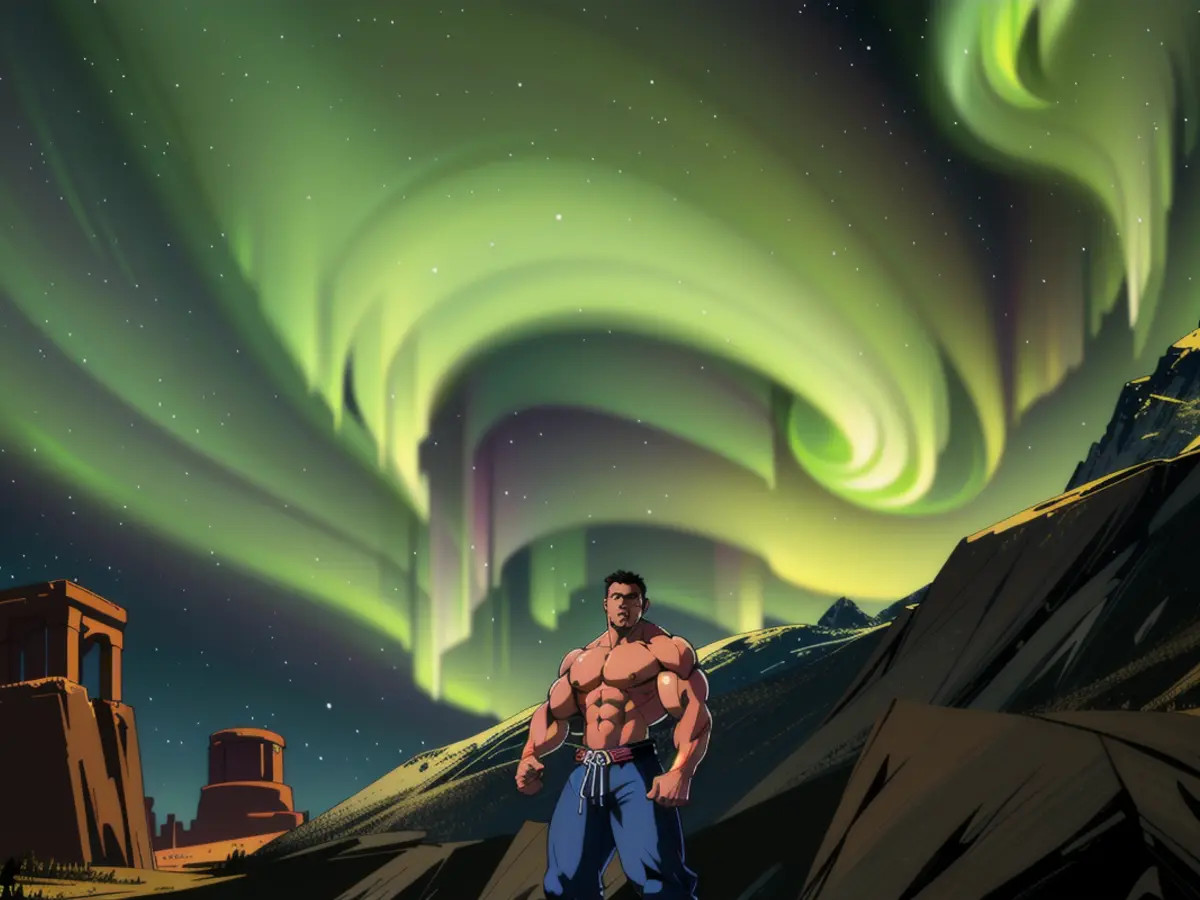Possible Aurora Borealis Sightings Tonight across 22 States due to Strong Geomagnetic Weather
Share on Social Media- Share on Facebook- Share on Twitter- Share on LinkedIn
Exciting Northern Lights Show Ahead!
Ready for a spectacle? According to the National Oceanic and Atmospheric Administration (NOAA), we can expect a stunning display of northern lights this Saturday night! This show could potentially be visible in up to two dozen states, even in areas that seldom see the lights.
The Forecast
The aurora is expected to stretch farther south than usual due to an intense geomagnetic storm, according to the NOAA. This storm is caused by a coronal mass ejection (CME), an eruption of plasma and magnetic field from the sun, set to hit our planet overnight.
The predicted spectacular lights come on the heels of a few days of increased geomagnetic activity, with moderate storms observed between Thursday and Friday. As per the NOAA's three-day forecast, further minor to moderate geomagnetic storms are expected to persist until Monday, with the northern lights forecast weakening but still potentially visible in at least ten states over the weekend.
Who Can Witness The Lights?
The entirety of Alaska is expected to have a high likelihood of observing the aurora, as per the NOAA's forecast. Additional states within the red zone, indicating a high likelihood, encompass the northern tips of Montana, North Dakota, and Minnesota. States with a lower possibility include Washington, Idaho, Wyoming, South Dakota, Wisconsin, and Michigan. The NOAA's projected view line (the southernmost point where the aurora is estimated to be visible) passes through Oregon, Nebraska, Iowa, Illinois, Indiana, Ohio, Pennsylvania, New York, Massachusetts, Vermont, New Hampshire, and Maine.
How to Optimize Your Viewing Experience

The lights are best appreciated in the dark, particularly between 10 p.m. and 2 a.m. local time. NOAA suggests avoiding light pollution, seeking the highest vantage point possible, and heading north.
Tips for Photographing the Northern Lights
National Geographic recommends using a wide-angle lens and a tripod for enhanced stability, as well as night mode if you're using an iPhone. They also suggest using an aperture value of 4.0 or lower and adding detail to your image by framing it with trees, bodies of water, or mountains.
Background Information
The northern lights have been particularly active over the past year due to heightened solar activity, causing stronger solar flares and geomagnetic storms. We are currently in the "solar maximum" phase of the Sun's 11-year cycle, during which solar events are more frequent. The lights even reached a 500-year peak last year, an occurrence that NASA expects to continue through 2026, followed by a decrease. Remarkably, some of the strongest solar flares in decades have occurred over the last year, causing the lights to be visible as far south as Florida.
For More Information
- Northern Lights Displays Hit A 500-Year Peak In 2024-Here's Where You Could Catch Aurora Borealis In 2025
- Tonight's static viewline forecast predicts a bright display of the northern lights, known as aurora borealis, over areas typically seldom seen, thanks to a geomagnetic storm caused by a coronal mass ejection (CME) from the sun.
- The likelihood of observing the aurora borealis could be high, particularly in areas with lower pollution levels, especially in Alaska, the northern tips of Montana, North Dakota, and Minnesota, and states along the NOAA's projected view line, including Oregon, Nebraska, and Maine.
- To maximize your viewing experience of the northern lights, it's recommended to avoid light pollution, seek the highest vantage point possible, and head north, as suggested by NOAA and National Geographic.








